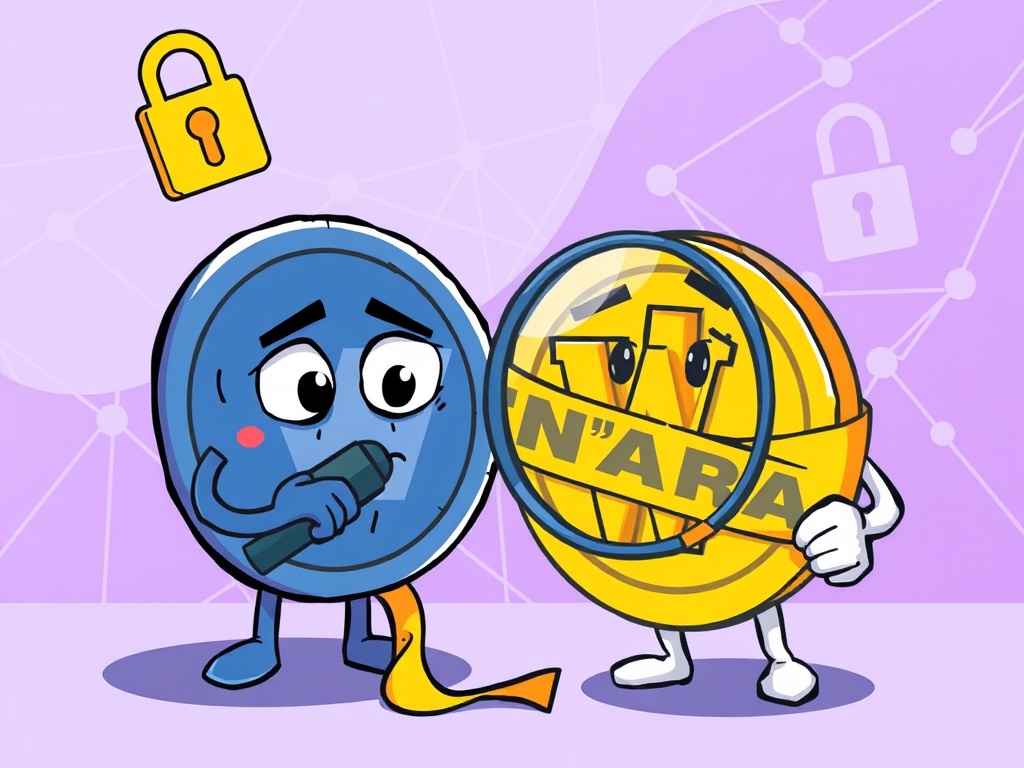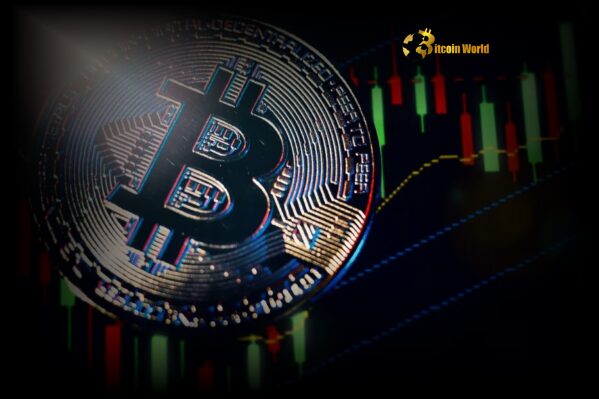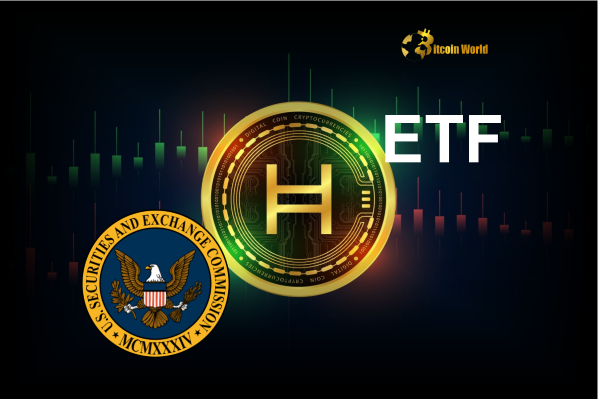BitcoinWorld

WOO Crypto Faces Critical Scrutiny: Bithumb’s Cautionary Designation Explained
In the fast-paced world of digital assets, news can hit hard and fast, often with significant implications for investors. A recent announcement from South Korean crypto exchange Bithumb has sent ripples through the market, designating WOO crypto as a ‘cautionary asset.’ This isn’t just a minor administrative update; it’s a serious flag raised by the Digital Asset eXchange Alliance (DAXA), a powerful consultative group of local exchanges. For anyone holding, trading, or simply watching WOO crypto, understanding the nuances of this designation is crucial.
What Triggered the WOO Crypto Cautionary Designation?
The decision to label WOO crypto as a cautionary asset stems from a confirmed security incident. According to Bithumb’s official announcement, this incident is linked directly to the digital asset itself, its issuer, or the wallets and distributed ledgers managed by its operator. Here’s a breakdown of the key reasons:
- Confirmation of a Security Incident: A verified security breach or vulnerability has been identified. This could range from a hack, a protocol flaw, or an issue with the underlying technology.
- Association with WOO Crypto Ecosystem: The incident isn’t isolated; it’s directly tied to WOO, its development team, or the infrastructure it relies upon.
- Unidentified or Unresolved Root Cause: Perhaps the most concerning aspect is that the fundamental cause of the security incident remains either unknown or has not yet been fixed. This lack of resolution implies ongoing risk.
For a digital asset to be flagged in such a manner by a prominent exchange and an alliance like DAXA, it signals a significant concern about its integrity and the safety of user funds associated with it. This isn’t a decision taken lightly, as it directly impacts market perception and investor confidence in WOO crypto.
Understanding DAXA and Its Role in Digital Asset Security
To fully grasp the weight of Bithumb’s announcement regarding WOO crypto, it’s important to know who DAXA is and why their collective decision holds so much sway. DAXA, or the Digital Asset eXchange Alliance, is a self-regulatory body formed by South Korea’s top five crypto exchanges: Upbit, Bithumb, Coinone, Korbit, and Gopax. Their primary objectives include:
- Enhancing Investor Protection: By establishing common standards and monitoring practices, DAXA aims to safeguard users from risks like fraud, market manipulation, and security breaches.
- Promoting Market Transparency: They work to ensure that digital assets listed on their member exchanges meet certain criteria for disclosure and operational integrity.
- Establishing Industry Best Practices: DAXA provides a framework for exchanges to collaborate on issues like listing/delisting policies, security protocols, and compliance with emerging regulations.
When DAXA collectively designates an asset like WOO crypto as ‘cautionary,’ it’s a powerful signal to the entire market, not just to users of Bithumb. It signifies a unified concern from major players in a highly regulated market, suggesting that the issues are serious enough to warrant collective scrutiny and potential action.
Immediate Implications for WOO Crypto Holders and the Market
So, what does this ‘cautionary asset’ designation actually mean for those holding WOO crypto, and for the broader market? The implications are multi-faceted and can have a significant impact:
- Increased Scrutiny: Bithumb, and likely other DAXA members, will subject WOO crypto to heightened monitoring. This means a deeper dive into its operations, security measures, and the resolution of the identified incident.
- Potential Trading Restrictions: While not immediately enacted, a cautionary designation can precede restrictions such as limitations on withdrawals, deposits, or even trading pairs. This impacts liquidity and accessibility.
- Risk of Delisting: This is perhaps the most severe implication. If the security incident is not resolved satisfactorily, or if the project fails to meet DAXA’s requirements, WOO crypto could face delisting from Bithumb and potentially other South Korean exchanges. Delisting often leads to a sharp decline in price and accessibility for investors.
- Investor Sentiment and Price Impact: News of such a designation almost invariably leads to a negative shift in investor sentiment. Fear, uncertainty, and doubt (FUD) can cause a sell-off, impacting the price of WOO crypto.
For existing holders, it’s a period of uncertainty. For potential investors, it’s a clear warning sign to exercise extreme caution before entering the market for this particular asset. The market reacts to such news with speed, and understanding these potential outcomes is key to making informed decisions.
The Path Forward for WOO Network: Addressing the Security Lapse
With WOO crypto under such intense scrutiny, the onus is now firmly on the WOO Network team to address the underlying issues. Their response will be critical in determining the future trajectory of the asset. Here are the crucial steps they must take:
- Identify and Resolve the Root Cause: This is paramount. The WOO Network must conduct a thorough investigation to pinpoint exactly what caused the security incident and implement robust solutions to prevent recurrence.
- Transparent Communication: Open and honest communication with exchanges, investors, and the wider community is essential. Regular updates on their investigation, remediation efforts, and timelines will help rebuild trust.
- Enhanced Security Measures: Beyond fixing the immediate issue, WOO Network should demonstrate a commitment to bolstering their overall security infrastructure, perhaps by engaging third-party auditors or implementing new protocols.
- Engagement with DAXA and Exchanges: Proactive engagement with Bithumb and DAXA is vital. They need to provide all requested information, demonstrate compliance, and show a clear path to resolving the cautionary status.
The ability of the WOO Network to navigate this challenge effectively will be a true test of their resilience and commitment to their project and community. A swift, decisive, and transparent response could mitigate long-term damage and restore confidence in WOO crypto.
Navigating Uncertainty: Advice for WOO Crypto Investors
If you’re an investor holding WOO crypto, this news can be unsettling. It’s crucial to approach the situation with a clear head and a strategic mindset. Here’s some actionable advice:
- Stay Informed: Follow official announcements directly from Bithumb, DAXA, and the WOO Network. Avoid relying solely on social media rumors. Official channels provide the most accurate information.
- Assess Your Risk Tolerance: Re-evaluate your position. Are you comfortable holding an asset under such scrutiny? Consider how much you’ve invested and what impact a potential delisting or further price decline would have on your portfolio.
- Diversify Your Portfolio: This incident highlights the importance of not having all your eggs in one basket. A diversified portfolio helps mitigate risks associated with single asset downturns.
- Consider Your Options: Depending on your risk appetite, you might consider reducing your exposure to WOO crypto. However, avoid panic selling, as sudden decisions often lead to losses. If you decide to sell, ensure you understand the associated fees and market conditions.
- Understand Delisting Procedures: Familiarize yourself with how exchanges handle delisted assets. Often, there’s a grace period to withdraw funds, but trading typically ceases.
This situation serves as a stark reminder that while cryptocurrencies offer immense opportunities, they also come with significant risks, particularly those related to security and regulatory compliance. Diligence and caution are always your best allies.
The designation of WOO crypto as a cautionary asset by Bithumb, acting under DAXA’s guidance, is a critical development. It underscores the growing emphasis on security and regulatory compliance within the digital asset space, particularly in markets like South Korea. While the immediate future for WOO crypto remains uncertain, contingent on the WOO Network’s ability to resolve the identified security incident, this event serves as a vital lesson for all participants in the crypto ecosystem. It reinforces the need for robust security measures, transparent communication, and continuous vigilance from both projects and investors. The coming weeks will be pivotal for WOO, as the crypto community watches closely to see how this challenging situation unfolds.
Frequently Asked Questions (FAQs)
What does ‘cautionary asset’ mean for WOO crypto?
A ‘cautionary asset’ designation means that the asset, in this case, WOO crypto, is under heightened scrutiny by the exchange (Bithumb) and the regulatory alliance (DAXA) due to a confirmed, unresolved security incident. It indicates potential risks to investors and can lead to trading restrictions or even delisting if the issues are not resolved.
What is DAXA and why is its decision important?
DAXA (Digital Asset eXchange Alliance) is a self-regulatory body formed by South Korea’s major crypto exchanges (Upbit, Bithumb, Coinone, Korbit, Gopax). Its decisions are important because they represent a unified stance from leading exchanges in a highly regulated market, influencing market perception and potential actions across multiple platforms.
How does this affect my WOO crypto holdings?
The designation can lead to increased price volatility, reduced liquidity, and a general decline in investor confidence. In the worst-case scenario, if the security incident remains unresolved, WOO crypto could be delisted from Bithumb, making it harder to trade or access your funds on that exchange.
What should WOO Network do now?
WOO Network must prioritize identifying and resolving the root cause of the security incident. They need to communicate transparently with exchanges and the community about their remediation efforts, implement enhanced security measures, and actively engage with DAXA to demonstrate compliance and a path towards resolving the cautionary status.
Should I sell my WOO crypto immediately?
The decision to sell or hold WOO crypto depends on your individual risk tolerance and investment strategy. It’s crucial to stay informed, assess the situation calmly, and avoid panic selling. Consider diversifying your portfolio and understanding the potential implications before making any rash decisions.
If you found this article insightful, please consider sharing it with your network on social media! Your shares help us reach more people and keep the crypto community informed about critical market developments.
To learn more about the latest crypto market trends, explore our article on key developments shaping WOO crypto‘s future outlook.
This post WOO Crypto Faces Critical Scrutiny: Bithumb’s Cautionary Designation Explained first appeared on BitcoinWorld and is written by Editorial Team





